Albania, often referred to as the “Land of Eagles,” is a country rich in history, culture, and natural beauty. Nestled in the heart of the Balkan Peninsula, this hidden gem of Europe offers a unique blend of diverse landscapes, fascinating history, and vibrant traditions.
Table of Contents
Geography
Albania spans an area of approximately 28,748 square kilometers, making it a relatively small country by European standards. Despite its size, it boasts a remarkably diverse geography characterized by mountains, plains, and a stunning coastline along the Adriatic and Ionian Seas. The country is predominantly mountainous, with the Albanian Alps in the north and the Pindus Mountains extending into the south. The highest peak, Mount Korab, reaches an elevation of 2,751 meters, while the rugged terrain features numerous valleys, rivers, and lakes.
Countries’ coastline stretches for about 450 kilometers, showcasing a blend of sandy beaches and rocky cliffs. The western coastal plains are fertile and conducive to agriculture, while the eastern regions are more rugged and less populated. The country is also rich in water resources, with numerous rivers such as the Vjosa, Drin, and Seman, as well as several lakes, including Lake Shkodra and Lake Ohrid.
The climate in this country varies considerably depending on the region. Coastal areas enjoy a Mediterranean climate with hot, dry summers and mild, wet winters, making them ideal for agriculture and tourism. Inland areas experience a more continental climate, with greater temperature variations between seasons. This climatic diversity supports a wide range of flora and fauna, contributing to Albania’s reputation as a biodiversity hotspot.
States of Albania
Albania is divided into 12 counties, which serve as its primary administrative divisions. Each county has its own unique characteristics and attractions. The counties are as follows:
| No | County | Capital |
|---|---|---|
| 1 | Berat | Berat |
| 2 | Bulqizë | Bulqizë |
| 3 | Diber | Diber |
| 4 | Elbasan | Elbasan |
| 5 | Shkoder | Shkodra |
| 6 | Fier | Fier |
| 7 | Gjirokastër | Gjirokastër |
| 8 | Korçë | Korçë |
| 9 | Tirana | Tirana |
| 10 | Vlorë | Vlorë |
| 11 | Kukës | Kukës |
| 12 | Lezhë | Lezhë |
A Rich and Complex History
Albania’s history is a tapestry woven with influences from various civilizations, each leaving its mark on the country’s cultural and historical landscape. The earliest evidence of human settlement in Albania dates back to the Paleolithic era, with archaeological findings indicating a continuous human presence in the region for thousands of years.
Ancient and Classical Periods
During the ancient and classical periods, the area now known as Albania was inhabited by the Illyrians, an Indo-European people. The Illyrians established powerful kingdoms and developed a distinctive culture, which included complex burial practices, fortified settlements, and advanced metallurgy. The Greek colonies along the coast, such as Apollonia and Dyrrachium, facilitated cultural exchange and trade between the Illyrians and the Greeks.
In the 3rd century BCE, the region came under the influence of the Roman Empire. The Romans incorporated Illyria into their vast empire, and the area flourished as a significant center of trade and military activity. Roman roads, such as the Via Egnatia, connected the Adriatic coast to the eastern provinces, fostering economic growth and cultural exchange.
Medieval and Ottoman Eras
Following the decline of the Roman Empire, Albania experienced a period of instability marked by invasions and migrations of various tribes, including the Goths, Huns, and Slavs. By the early medieval period, the Byzantine Empire had established control over the region, and Christianity became the dominant religion.
In the 14th century, the rise of the Ottoman Empire brought significant changes to Albania. The Ottomans gradually extended their rule over the Balkans, and Albania became part of their vast empire. The Ottomans introduced Islam, which gradually became the predominant religion in the region. Despite the challenges posed by Ottoman rule, Albanian culture and identity persisted, with notable figures like Gjergj Kastrioti Skanderbeg leading resistance efforts against the Ottomans in the 15th century.
Independence and Modern Era
Albania declared its independence from the Ottoman Empire on November 28, 1912. The subsequent years were marked by political turmoil and territorial disputes with neighboring countries. During World War II, Albania was occupied by Italy and later by Nazi Germany. Following the war, the country fell under communist rule, led by Enver Hoxha, who established one of the most repressive regimes in Eastern Europe.
The collapse of the communist regime in 1991 marked the beginning of Albania’s transition to democracy and a market economy. The country faced significant challenges during this period, including political instability, economic hardship, and social upheaval. However, Albania has made remarkable progress in recent decades, joining NATO in 2009 and becoming a candidate for European Union membership in 2014.
Top Ten Must-Visit Destinations in Albania
Albania is a country blessed with breathtaking landscapes, rich history, and vibrant culture. While its cities are worth exploring, the true charm of Albania lies in its diverse destinations that showcase the country’s natural beauty and heritage. Here are the top ten must-visit destinations in Albania that you shouldn’t miss.
1. The Albanian Riviera

The Albanian Riviera is famous for its stunning coastline, crystal-clear waters, and charming villages. This destination offers a mix of beautiful beaches, picturesque landscapes, and opportunities for water sports. Visitors can relax on sandy beaches like Jale Beach and Dhërmi Beach or explore hidden coves and pristine bays along the coast.
2. Theth National Park

Theth National Park, located in the Albanian Alps, is a paradise for nature lovers and outdoor enthusiasts. The park is known for its dramatic mountain scenery, hiking trails, and traditional stone houses. Hikers can explore the scenic trails leading to the Grunas Waterfall and the Blue Eye, a stunning natural spring with vibrant blue waters.
3. Gjirokastër
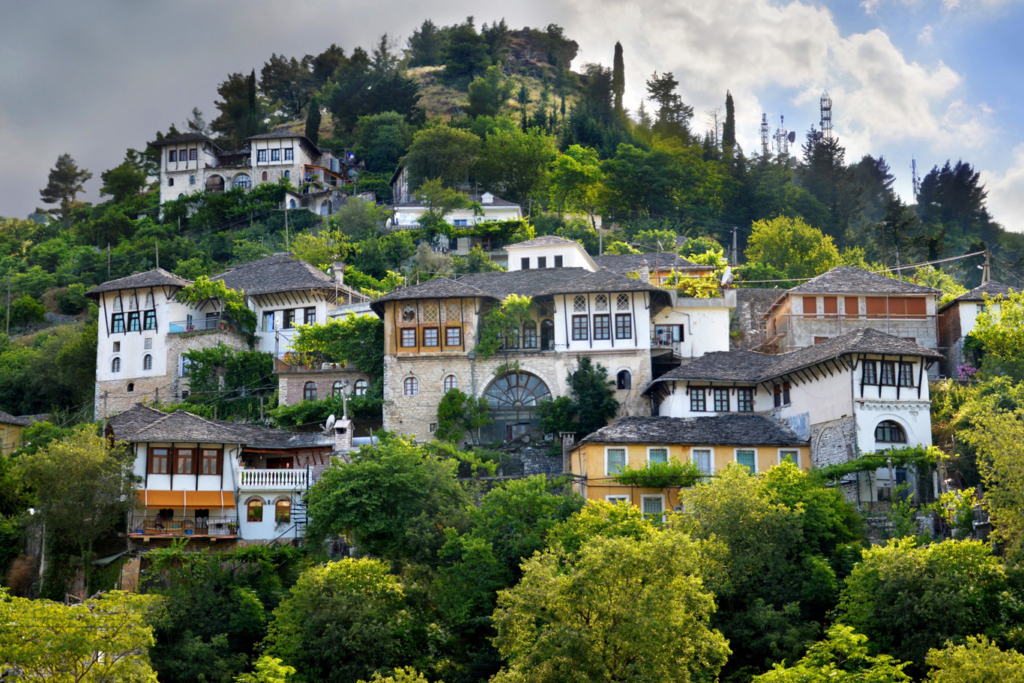
Gjirokastër, a UNESCO World Heritage Site, is famous for its well-preserved Ottoman-era architecture and cobblestone streets. The destination is dominated by the Gjirokastër Castle, which offers panoramic views of the surrounding landscape. Visitors can also explore the Ethnographic Museum, located in the former home of the Albanian dictator Enver Hoxha, to learn about the region’s rich history.
4. Berat
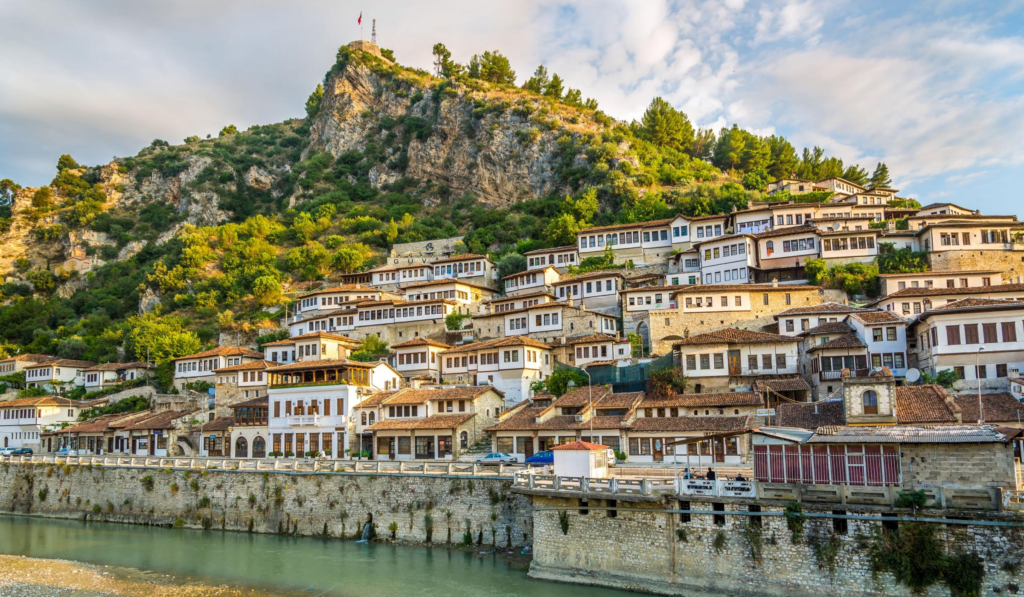
Berat, another UNESCO World Heritage Site, is known as the “City of a Thousand Windows” due to its unique architecture and hillside setting. The highlight of this destination is the Berat Castle, which houses ancient churches and offers breathtaking views of the Osum River and the surrounding valley. Visitors can wander through the historic Mangalem and Gorica districts, where traditional houses line the streets.
5. Saranda

Saranda is a coastal destination that serves as a gateway to the stunning Ionian Sea. Known for its beautiful beaches and vibrant nightlife, Saranda is perfect for relaxation and entertainment. The nearby ancient city of Butrint, a UNESCO World Heritage Site, features well-preserved ruins that date back to the Greek and Roman periods, making it a must-visit for history buffs.
6. Apollonia
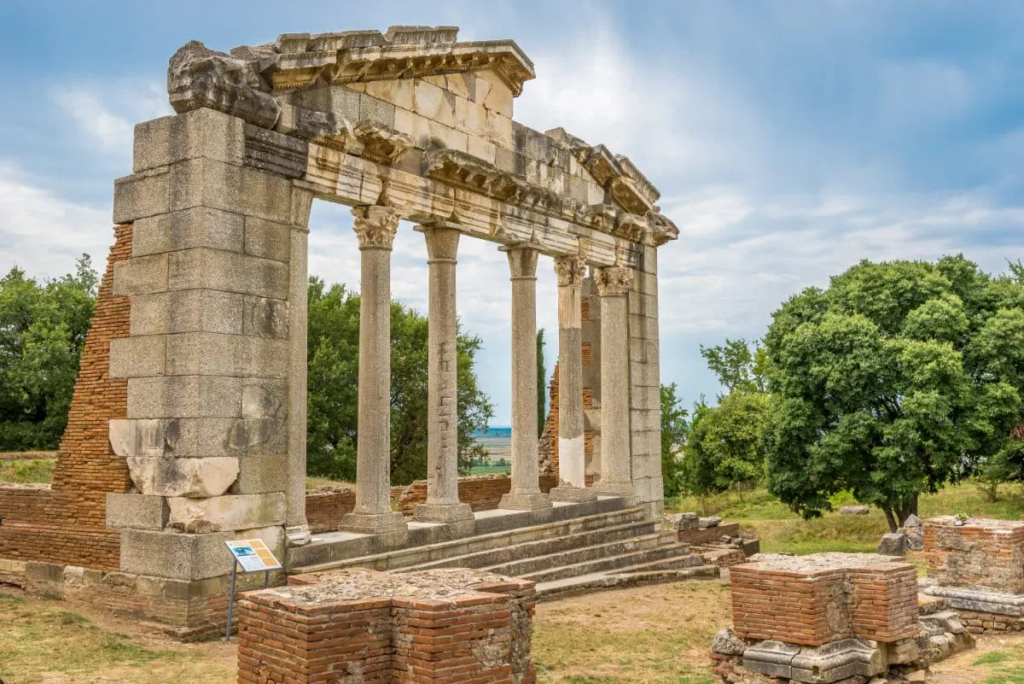
The archaeological site of Apollonia is one of Albania’s most significant ancient ruins. Founded in the 6th century BC, Apollonia was an important center of trade and culture in the region. Visitors can explore the remains of temples, a theater, and a beautiful archaeological museum that showcases artifacts from the ancient city. The site is surrounded by stunning landscapes, making it an ideal destination for history enthusiasts and nature lovers alike.
7. Ksamil Islands
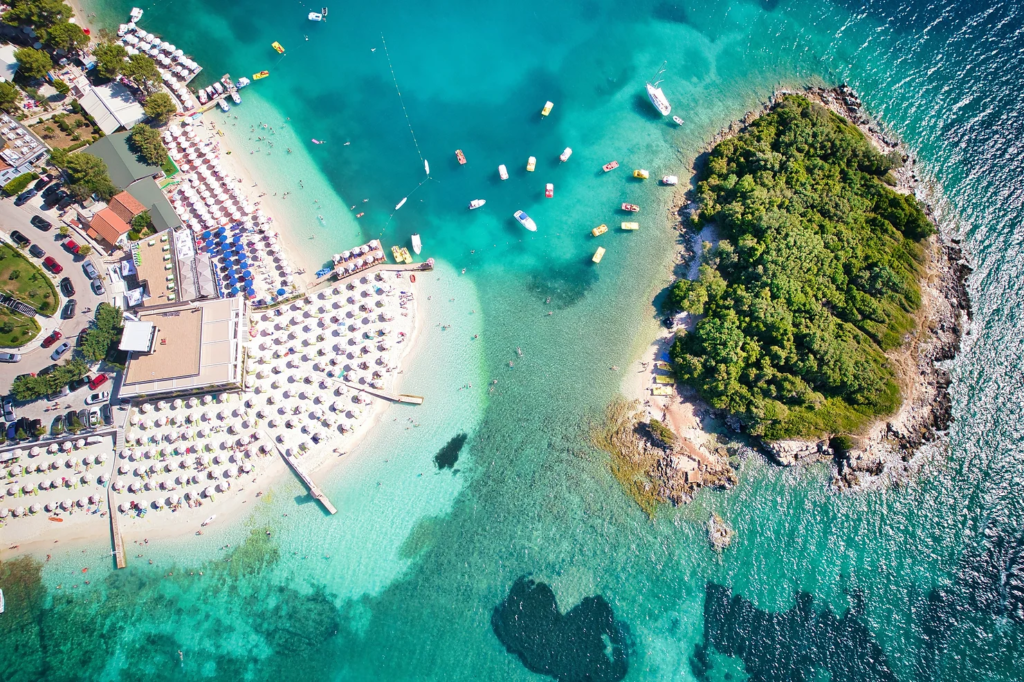
The Ksamil Islands, located off the coast of Saranda, are a tropical paradise known for their pristine beaches and turquoise waters. This destination is perfect for swimming, sunbathing, and snorkeling. The islands offer a peaceful escape and the opportunity to relax in a picturesque setting, making it a favorite among travelers seeking tranquility and natural beauty.
8. Lake Ohrid

Lake Ohrid, shared between Albania and North Macedonia, is one of the oldest and deepest lakes in Europe. The Albanian side of the lake offers stunning views, charming villages, and opportunities for swimming and boating. Visitors can explore the UNESCO-listed Ohrid region, known for its rich biodiversity and ancient churches that dot the shoreline. The lake’s crystal-clear waters and picturesque landscapes make it a must-visit destination.
9. Dajti Mountain

Dajti Mountain, located just outside Tirana, is a popular destination for outdoor activities and breathtaking views. Visitors can take the Dajti Ekspres cable car to the summit, where they can enjoy panoramic views of Tirana and the surrounding areas. The mountain is perfect for hiking, picnicking, and exploring nature, making it an ideal escape from the bustling city.
10. Divjakë-Karavasta National Park
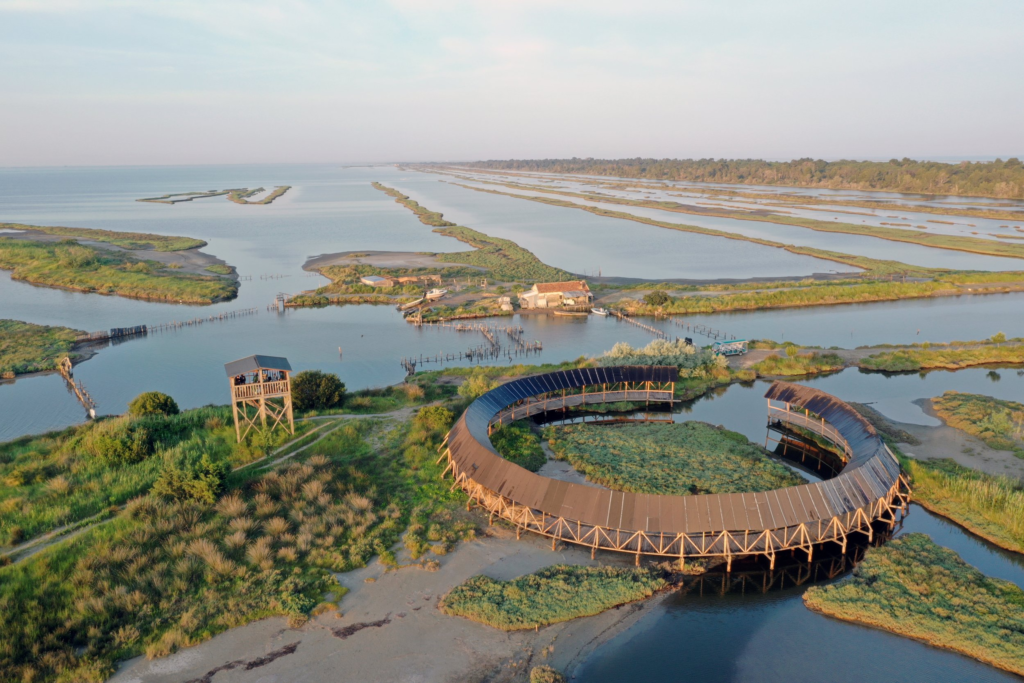
Divjakë-Karavasta National Park is a unique destination known for its diverse ecosystems and rich birdlife. The park is home to the Karavasta Lagoon, one of the largest lagoons in the Mediterranean, which serves as a vital habitat for various bird species, including the endangered Dalmatian pelican. Visitors can explore the park’s walking trails, enjoy birdwatching, and appreciate the natural beauty of the coastal wetlands.
Top Ten Most Beautiful Village of Albania
| No | Village | Location |
|---|---|---|
| 1 | Gjirokastër | Gjirokastër County |
| 2 | Berat | Berat County |
| 3 | Dhërmi | Vlorë County |
| 4 | Ksamil | Vlorë County |
| 5 | Boboshtic | Korçë County |
| 6 | Theth | Shkodër County |
| 7 | Valbona | Kukës County |
| 8 | Apollonia | Fier County |
| 9 | Piskovë | Gjirokastër County |
| 10 | Lin | Korçë County |
Language and Literature
The official language of Albania is Albanian, a unique Indo-European language with no close relatives. The Albanian alphabet, consisting of 36 letters, was standardized in the 20th century. Albania has a rich literary tradition, with notable writers such as Ismail Kadare, who has been nominated for the Nobel Prize in Literature multiple times. Traditional oral literature, including epic poems and folk tales, also plays a significant role in Albanian culture.
Music and Dance
Music is an integral part of Albanian culture, with a variety of traditional styles and instruments. The polyphonic singing of southern Albania, recognized by UNESCO as an intangible cultural heritage, is a unique and hauntingly beautiful form of vocal music. Traditional instruments such as the çifteli (a two-stringed lute) and the lahuta (a single-stringed instrument) are commonly used in folk music.
Dance is another important aspect of Albanian culture. Traditional dances, often performed during weddings and festivals, feature intricate footwork and vibrant costumes. The Valle, a traditional circle dance, is one of the most popular and widely performed dances in Albania.
Top Eight Most Famous Food of Albania
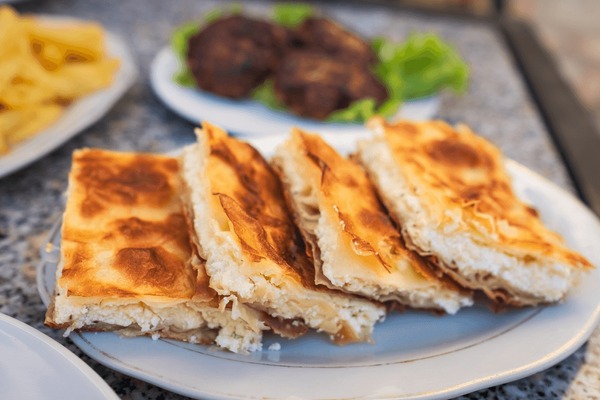
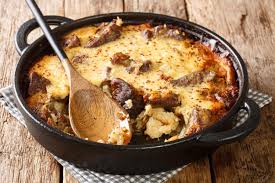
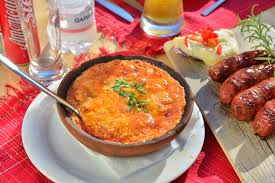
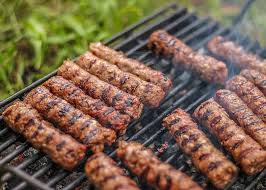
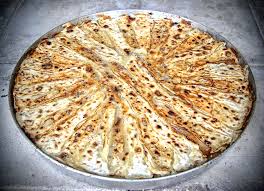
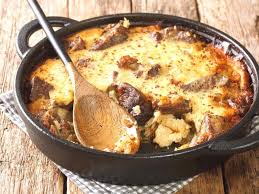


Cuisine
Albanian cuisine is a delightful blend of Mediterranean and Balkan influences, characterized by fresh ingredients and bold flavors. Staples of the Albanian diet include bread, dairy products, vegetables, and meat. Popular dishes include byrek (a savory pastry filled with cheese, meat, or spinach), tave kosi (a baked dish made with lamb and yogurt), and fërgesë (a traditional dish made with peppers, tomatoes, and cottage cheese).
Albania’s culinary heritage is also influenced by its diverse regions, resulting in a variety of local specialties. Coastal areas are known for their delicious seafood, while the mountainous regions offer hearty dishes such as flija (a layered pancake-like dish) and tavë krapi (carp baked in a clay pot). Albanian hospitality is legendary, and visitors are often treated to generous portions of homemade food and raki, a traditional alcoholic beverage made from grapes or plums.
Conclusion
Albania, with its stunning landscapes, rich history, and vibrant culture, is a country that captivates the hearts of those who visit. From its diverse geography and complex past to its unique traditions and culinary delights, Albania offers a wealth of experiences waiting to be discovered. As the country continues to evolve and embrace its identity, it remains a hidden gem in Europe, inviting travelers to explore its enchanting beauty and warm hospitality.
let’s enjoy few years on earth with peace and happiness….✍🏼🙏

